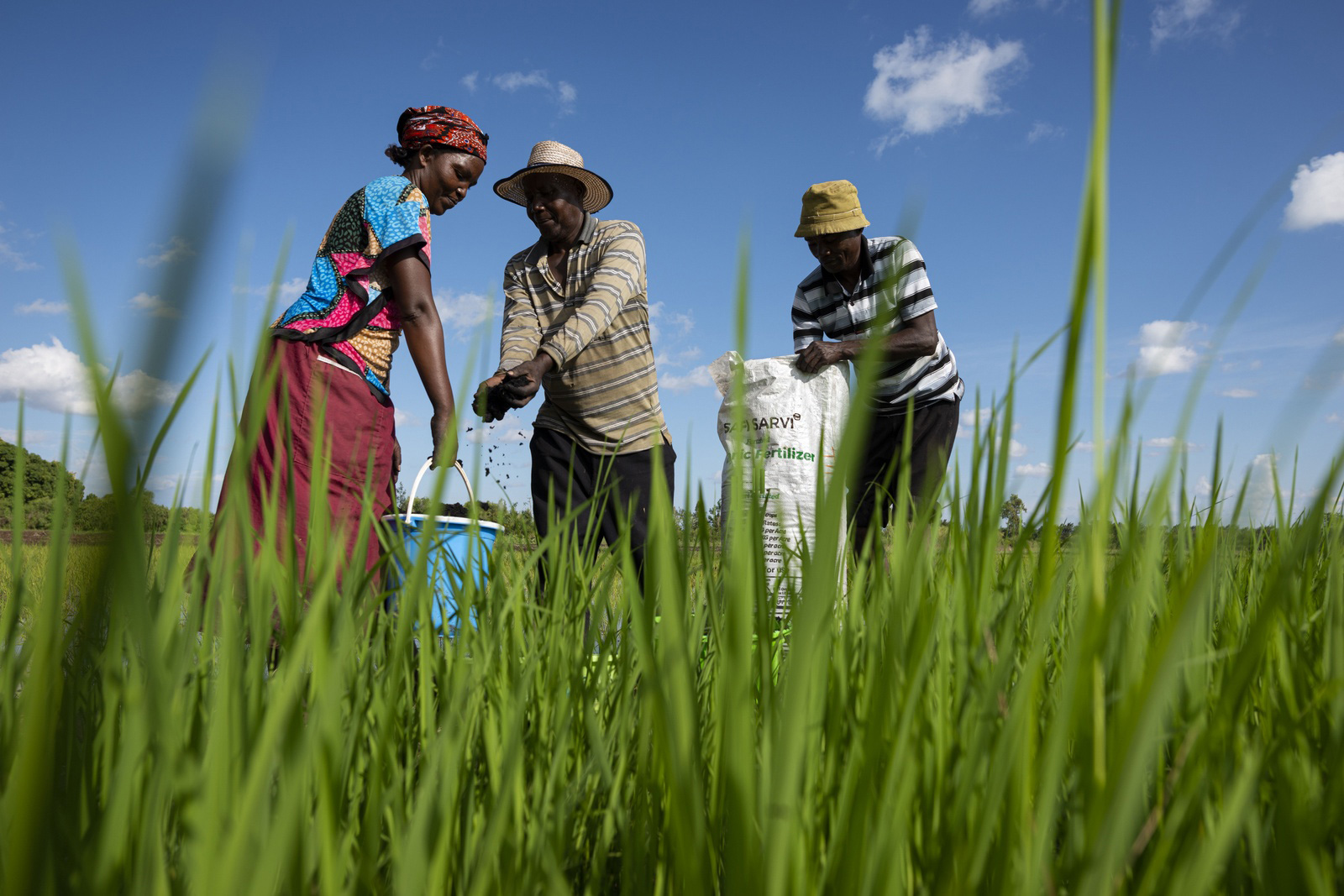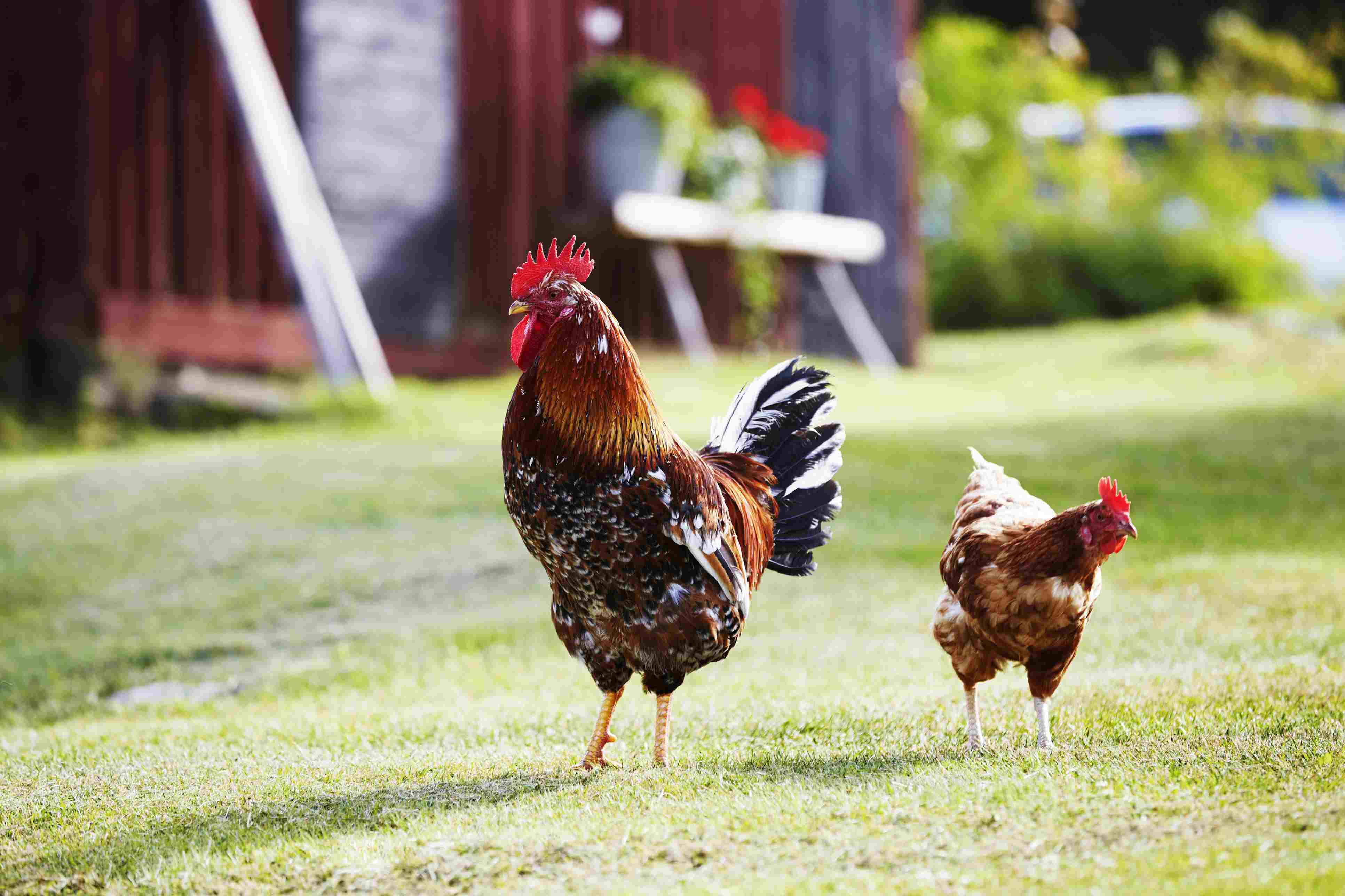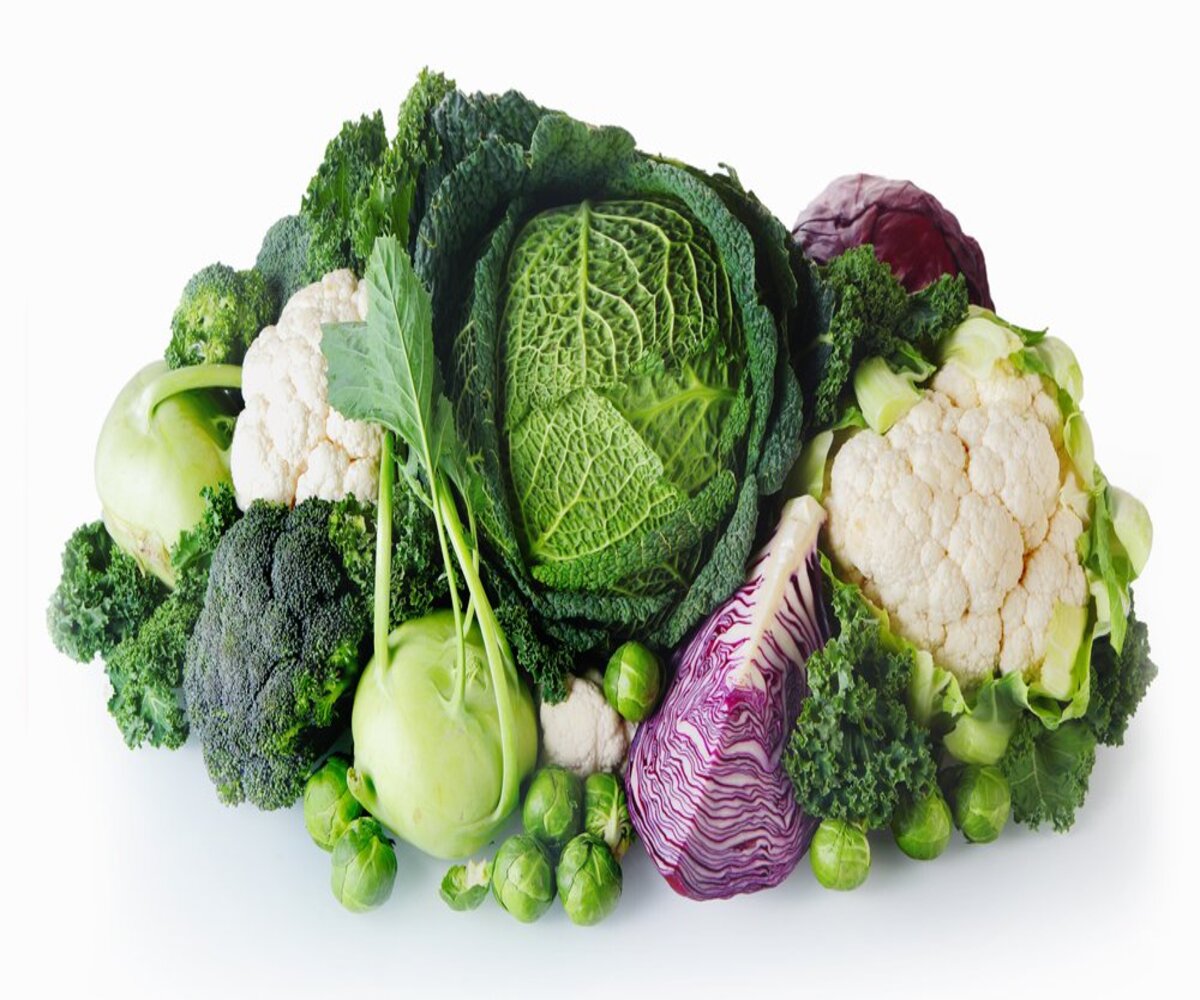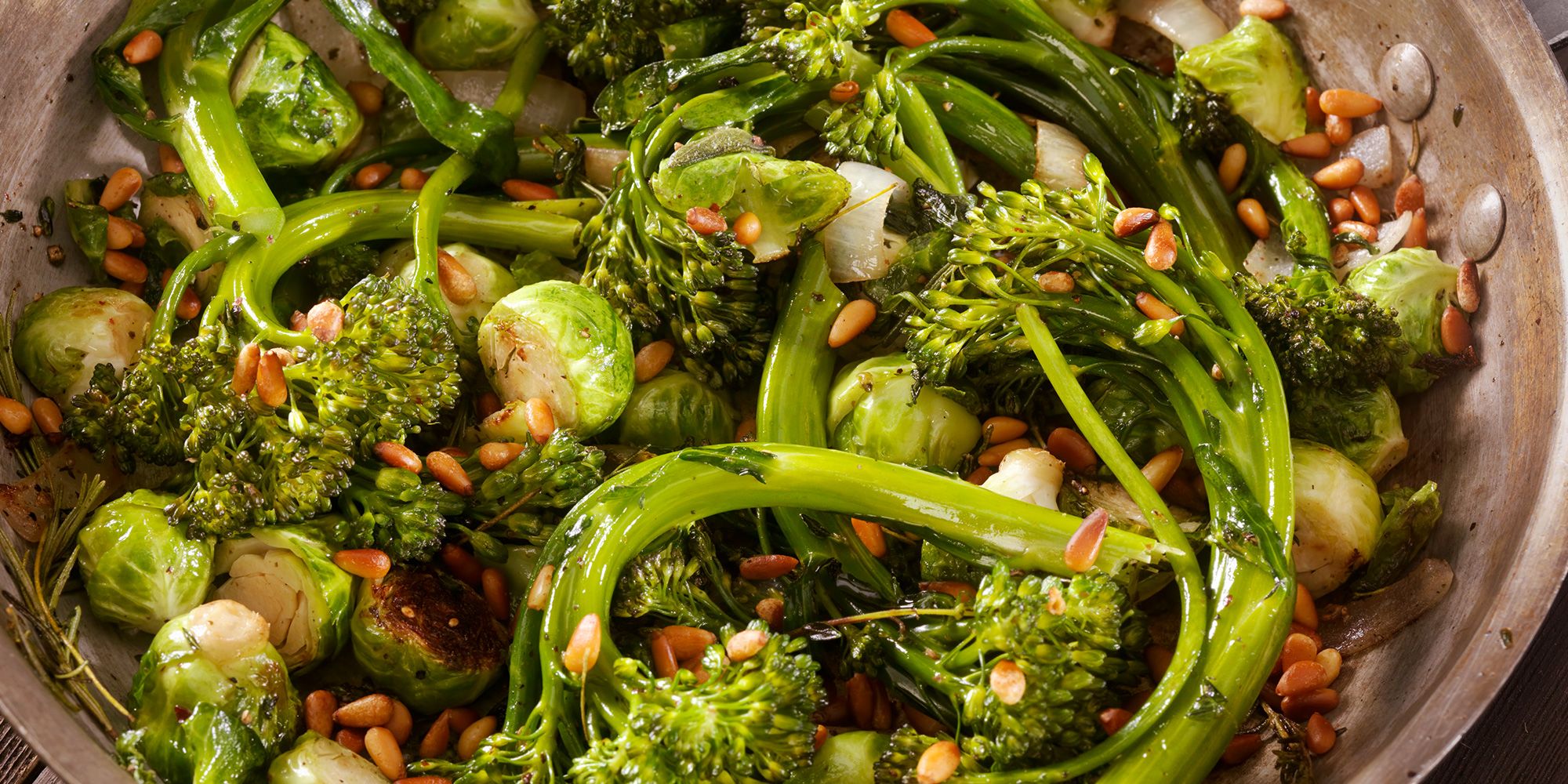Home>Gardening News and Trends>Latest News>Where Is The Knowledge Of Crop Cultivation In The Americas Believed To Have Originated?


Latest News
Where Is The Knowledge Of Crop Cultivation In The Americas Believed To Have Originated?
Published: January 26, 2024
Discover the origin of crop cultivation in the Americas. Latest news reveals where the knowledge is believed to have originated.
(Many of the links in this article redirect to a specific reviewed product. Your purchase of these products through affiliate links helps to generate commission for Chicagolandgardening.com, at no extra cost. Learn more)
Table of Contents
- Introduction
- The Origins of Crop Cultivation in the Americas
- Theories on the Origins of Crop Cultivation
- Mesoamerica: A Likely Center of Origin
- Evidence Supporting Mesoamerica as the Birthplace of Crop Cultivation
- Alternative Theories: South America and the Caribbean
- Contradictory Evidence and Debates
- Conclusion
Introduction
Understanding the origins of crop cultivation in the Americas is a fascinating and complex topic that has captivated archaeologists, anthropologists, and historians for decades. The cultivation of crops played a pivotal role in shaping the development of ancient civilizations, allowing for the establishment of settled communities, the rise of complex societies, and the eventual growth of powerful empires.
But where did this knowledge of crop cultivation in the Americas originate? This question has sparked countless debates and theories as researchers strive to uncover the truth. By examining archaeological evidence, studying ancient texts and artifacts, and analyzing genetic data, scholars have pieced together a picture of how and where the domestication of plants first occurred.
Throughout this article, we will explore the various theories surrounding the origins of crop cultivation in the Americas, focusing on the three main regions believed to be the birthplace of this agricultural revolution: Mesoamerica, South America, and the Caribbean.
By delving into the evidence and examining the strengths and weaknesses of each theory, we hope to shed light on this intriguing puzzle and gain a deeper understanding of the development of agriculture in the Americas. Let’s embark on this journey to uncover the origins of crop cultivation and the civilizations that emerged as a result.
The Origins of Crop Cultivation in the Americas
The history of crop cultivation in the Americas is complex and spans thousands of years. The cultivation of crops provided early humans with a reliable food source and allowed for the development of more complex societies. Understanding the origins of crop cultivation is crucial to understanding the development of ancient civilizations in the Americas.
It is widely believed that the practice of cultivating crops originated in multiple regions throughout the Americas. Different regions saw the domestication of various plants, including corn, potatoes, beans, squash, and many others, which became staples in the diets of indigenous peoples.
These early agricultural practices had a profound impact on the societies that emerged. With a dependable food supply, communities were able to establish permanent settlements and shift from a nomadic lifestyle to one centered around agriculture. This transition allowed for the growth of complex social structures, the specialization of labor, and the emergence of powerful civilizations.
So, where did the knowledge of crop cultivation in the Americas originate? There are several competing theories that attempt to answer this question, each proposing a different region as the possible birthplace of agriculture in the Americas.
One theory suggests that crop cultivation began in Mesoamerica, specifically in what is now modern-day Mexico and Central America. Historical records and archaeological evidence support this theory, as the domestication of crops such as corn and beans has been traced back to this region.
Another theory proposes that agriculture originated in South America, particularly in the Andes region. The cultivation of crops such as potatoes, quinoa, and amaranth in this region supports this theory.
Additionally, some researchers argue that crop cultivation may have also started in the Caribbean, where evidence of ancient agricultural practices has been found on various islands.
These competing theories highlight the challenges faced by researchers in pinpointing the exact origins of crop cultivation in the Americas. While each theory has its strengths and weaknesses, it is clear that multiple regions played a significant role in the development of agriculture in the Americas. By studying the archaeological evidence, genetic studies, and ancient texts, researchers continue to piece together the puzzle of how crop cultivation spread throughout the Americas and contributed to the rise of complex societies.
Theories on the Origins of Crop Cultivation
The origins of crop cultivation in the Americas are the subject of various theories, each proposing a different region as the birthplace of agriculture. These theories are based on archaeological discoveries, genetic studies, and the analysis of ancient texts. Let’s explore some of the main theories in more detail:
- Mesoamerica: Many scholars believe that Mesoamerica, specifically modern-day Mexico and Central America, is the most likely center of origin for crop cultivation in the Americas. This theory is supported by the domestication of important crops such as corn, beans, and squash, which played a vital role in the development of ancient Mesoamerican civilizations like the Maya and Aztec.
- South America: Another theory proposes that crop cultivation originated in South America, particularly in the Andes region. This theory is supported by the domestication of crops such as potatoes, quinoa, and amaranth, which were essential to the survival and growth of ancient civilizations like the Inca.
- The Caribbean: Some researchers argue that the Caribbean islands may have been an important center for the origins of crop cultivation. Evidence of ancient agricultural practices, such as the cultivation of cassava and sweet potatoes, has been discovered on various islands, suggesting that early inhabitants of the Caribbean had advanced knowledge of crop cultivation.
- Diffusion: There is also a theory that suggests that crop cultivation in the Americas did not have a single point of origin, but rather spread through cultural diffusion. This theory proposes that the knowledge of agriculture was exchanged and spread among different regions, leading to the independent development of agricultural practices in various parts of the Americas.
Each of these theories presents compelling evidence for the origins of crop cultivation in the Americas. However, it is important to note that the exact origins may never be definitively determined, as the archaeological record is incomplete and subject to interpretation. It is likely that crop cultivation in the Americas had multiple points of origin and underwent complex processes of development and spread over time.
Further research, including genetic studies and interdisciplinary collaborations, will continue to shed light on the origins of crop cultivation in the Americas. By exploring these theories and analyzing the available evidence, researchers strive to unravel the complexities of the agricultural revolution that shaped ancient civilizations and transformed the course of human history.
Mesoamerica: A Likely Center of Origin
Mesoamerica, encompassing modern-day Mexico and Central America, is widely regarded as a probable center of origin for crop cultivation in the Americas. The region’s rich agricultural history and the domestication of important crops strongly support this theory.
One of the key reasons Mesoamerica is considered a likely center of origin is the domestication of maize, or corn. Maize played a fundamental role in the development of ancient Mesoamerican civilizations, serving as a staple crop and a symbol of cultural and economic significance. The cultivation of maize in Mesoamerica can be traced back at least 9,000 years, with evidence of experimentation and selective breeding to enhance its size and yield.
In addition to maize, Mesoamerica is also associated with the domestication of other important crops. The cultivation of beans, squash, and chili peppers further supported the development of agricultural practices and contributed to the dietary diversity of ancient Mesoamerican societies. These crops were not only cultivated for sustenance but also for their cultural and spiritual significance.
Mesoamerica’s favorable climate and diverse ecosystems provided a suitable environment for early agricultural experimentation. The region’s varied landscapes, ranging from highlands to lowlands, offered different microclimates that could support a wide range of crops. This diversity allowed for a complex agricultural system that provided sustenance to the growing populations and enabled the rise of sophisticated societies.
Moreover, Mesoamerica was home to several ancient civilizations that were renowned for their advancements in agriculture. The Maya, for instance, developed intricate agricultural systems that included terraced fields, irrigation canals, and sophisticated crop management techniques. The Aztec civilization, as well, had extensive agricultural knowledge and employed innovative farming techniques such as chinampas, or floating gardens.
Archaeological sites in Mesoamerica also contain evidence of early agricultural practices. Tools such as stone hoes, grinding stones, and storage pits have been found, providing insights into the agricultural techniques employed by ancient Mesoamerican communities.
While Mesoamerica is considered a likely center of origin for crop cultivation in the Americas, it is important to note that agriculture likely developed independently in multiple regions. The precise origins of other important crops, such as potatoes and quinoa, may differ from those of Mesoamerican crops.
Nonetheless, the compelling evidence of early crop domestication, the sophisticated agricultural systems, and the cultural significance of crops like maize support the theory that Mesoamerica played a crucial role in the origins of crop cultivation in the Americas. Further research, including genetic studies and interdisciplinary collaborations, will continue to refine our understanding of the agricultural revolution that unfolded in Mesoamerica and its impact on ancient civilizations.
Evidence Supporting Mesoamerica as the Birthplace of Crop Cultivation
There is a wealth of evidence that supports the theory that Mesoamerica, encompassing modern-day Mexico and Central America, was the birthplace of crop cultivation in the Americas. This evidence includes archaeological findings, genetic studies, and historical records that provide valuable insights into the agricultural practices of ancient Mesoamerican civilizations.
One of the strongest lines of evidence supporting Mesoamerica as the center of origin for crop cultivation is the domestication of maize, or corn. Maize was first domesticated in this region, and it became a staple crop for Mesoamerican societies, providing an abundant and reliable food source. Archaeological excavations have uncovered ancient maize cobs and pollen, dating back thousands of years, supporting the hypothesis that maize cultivation originated in Mesoamerica.
In addition to maize, other crops associated with Mesoamerica also provide compelling evidence. Beans, squash, and chili peppers were cultivated alongside maize, forming the basis of the Mesoamerican agricultural system. The domestication of these crops in Mesoamerica is well-documented through archaeological remains, such as preserved seeds and plant remains found at ancient agricultural sites.
The diversity of agricultural practices in Mesoamerica is further supported by the presence of sophisticated farming techniques. The Maya civilization, for example, implemented intricate terraced fields, raised bed gardens, and irrigation systems to cultivate crops efficiently. The Aztecs developed innovative farming methods such as chinampas, floating gardens made from reclaimed land in lakes and marshes, which significantly increased agricultural productivity.
Genetic studies have also contributed to the evidence supporting Mesoamerica as the birthplace of crop cultivation. DNA analysis of modern and ancient plant specimens has provided insights into the genetic diversity and domestication history of crops like maize, beans, and squash. These studies have revealed genetic similarities between modern cultivated varieties and ancient Mesoamerican plant species, supporting the hypothesis of localized domestication in the region.
Historical records from Mesoamerica further affirm the significance of agriculture in the region. Ancient texts, such as the Popol Vuh and the Florentine Codex, describe the mythical and cultural importance of maize in Mesoamerican societies. These records depict maize as a sacred crop and emphasize its central role in creation stories and religious rituals, further highlighting the deep connection between Mesoamerican civilizations and agriculture.
Overall, the wealth of archaeological, genetic, and historical evidence supports the theory that Mesoamerica was the birthplace of crop cultivation in the Americas. The domestication of maize, along with the cultivation of beans, squash, and chili peppers, the presence of sophisticated farming techniques, and the cultural significance of crops in Mesoamerican societies, all contribute to the robust case for Mesoamerica as the center of origin for crop cultivation in the Americas.
Alternative Theories: South America and the Caribbean
While Mesoamerica is often regarded as the likely center of origin for crop cultivation in the Americas, alternative theories propose other regions as potential birthplaces of agriculture. South America and the Caribbean, in particular, have been put forward as alternative candidates based on their own unique archaeological and historical evidence.
South America, especially the Andes region, is one such alternative theory. The domestication of crops like potatoes, quinoa, and amaranth in the Andes suggests a long history of agriculture in this area. Potatoes, in particular, were a vital crop for the ancient Andean civilizations, representing a source of sustenance and a symbol of cultural significance. The remarkable diversity of potato varieties in the Andes further supports the theory of localized domestication of this crop.
Another alternative theory suggests that the Caribbean islands played a significant role in the development of crop cultivation in the Americas. Evidence of ancient agricultural practices, such as the cultivation of cassava, sweet potatoes, and other root crops, has been discovered on various islands. This suggests that the inhabitants of the Caribbean possessed advanced knowledge of agriculture and engaged in agricultural practices earlier than previously thought.
Archaeological excavations in the Caribbean have revealed the presence of agricultural artifacts, including stone tools and pottery, indicating a long history of cultivation. Some islands, such as Puerto Rico and Hispaniola, show evidence of terraced fields and irrigation systems, suggesting an advanced level of agricultural expertise.
It is important to note that these alternative theories do not necessarily contradict the theory of Mesoamerica as the birthplace of crop cultivation. Rather, they provide a different perspective on the origins and development of agriculture in the Americas. It is possible that crop cultivation in the Americas had multiple points of origin, with different regions independently developing their own agricultural practices.
Furthermore, cultural exchange and trade between different regions likely played a significant role in the spread and exchange of agricultural knowledge. It is plausible that the knowledge and techniques of crop cultivation were not confined to a single region but were shared and adapted by neighboring communities.
As research continues and new discoveries are made, our understanding of the origins of crop cultivation in the Americas may evolve. Genetic studies, archaeological excavations, and the analysis of ancient texts and artifacts will shed further light on the complex history of agriculture in the Americas and the contributions made by different regions.
Alternative theories, such as those proposing South America and the Caribbean, contribute to the ongoing dialogue on the origins of crop cultivation, encouraging further investigation and exploration of the diverse agricultural practices that shaped ancient American civilizations.
Contradictory Evidence and Debates
While various theories propose Mesoamerica, South America, and the Caribbean as potential centers of origin for crop cultivation in the Americas, there are contradictory pieces of evidence and ongoing debates within the scientific community that complicate the picture.
One of the main points of debate revolves around the timing of crop domestication. The domestication of maize in Mesoamerica is well-documented, with evidence dating back thousands of years. However, the domestication timeline of other crops, such as potatoes and quinoa in South America, is less clear. Some studies suggest an earlier timeline for these crops, which challenges the idea that Mesoamerica was the sole birthplace of agricultural practices in the Americas.
Another point of contention is the influence of cultural exchange and migration on the spread of agricultural knowledge. It is believed that various cultures in the Americas interacted and exchanged ideas, including agricultural practices. This raises the possibility that agricultural knowledge diffused between regions, blurring the lines of a single origin point. The diffusion of crops and agricultural techniques through trade, migration, and cultural interaction could have contributed to the widespread adoption and adaptation of agricultural practices throughout the Americas.
Furthermore, genetic studies have revealed complex patterns of crop domestication and migration. Genetic diversity within crops like maize and potatoes has been found not only in Mesoamerica and the Andes but also among indigenous populations in other regions of the Americas. This suggests a more intricate history of crop movement and intermixing, challenging the notion of a single origin for crop cultivation.
Additionally, the impact of environmental factors cannot be overlooked. The availability of suitable habitats, climate conditions, and ecological adaptations played a crucial role in determining where certain crops could be cultivated. Different regions in the Americas offered diverse ecosystems, creating opportunities for the independent domestication of crops within specific environments.
While contradictory evidence and debates add complexity to the understanding of crop cultivation origins, these conversations also fuel scientific inquiry and drive further research. Researchers continue to refine methodologies, explore new archaeological sites, conduct genetic studies, and analyze ancient texts and artifacts, with the goal of uncovering more conclusive evidence and reaching a better understanding of the origins of crop cultivation in the Americas.
The ongoing debates reflect the interdisciplinary nature of the field, highlighting the importance of considering multiple lines of evidence and perspectives. As new discoveries and advancements in research emerge, they will continue to shape our understanding of the agricultural revolution in the Americas and the diverse origins of crop cultivation.
Conclusion
The origins of crop cultivation in the Americas remain a subject of ongoing research and debate. Multiple regions, including Mesoamerica, South America, and the Caribbean, are proposed as potential centers of origin for agricultural practices in the Americas.
The evidence supporting Mesoamerica as a likely birthplace of crop cultivation is strong. The domestication of maize, along with other important crops like beans and squash, and the presence of advanced farming techniques in ancient Mesoamerican civilizations provide compelling support for this theory. Nonetheless, alternative theories propose South America, particularly the Andes region, and the Caribbean islands as potential centers of agricultural innovation.
The contradictory evidence and debates surrounding the origins of crop cultivation highlight the complexity of the topic. Factors such as the timing of crop domestication, cultural exchange, genetic diversity, and environmental influences all contribute to the intricacies of understanding the origins of agriculture in the Americas. It is likely that multiple regions independently developed their own agricultural practices, while also sharing and exchanging knowledge with neighboring communities.
Continued research, interdisciplinary collaborations, and the exploration of new archaeological sites will further refine our understanding of the agricultural revolution in the Americas. Genetic studies, the analysis of ancient texts and artifacts, and the integration of diverse lines of evidence will contribute to a more comprehensive picture of crop cultivation origins.
Ultimately, the story of crop cultivation in the Americas is a testament to the ingenuity and adaptability of ancient civilizations. The transformation from a hunter-gatherer lifestyle to settled agricultural communities was a crucial turning point in human history, leading to the emergence of complex societies and the development of powerful civilizations. The origins of crop cultivation in the Americas continue to captivate researchers and offer insights into the resilience and innovation of early human societies.







